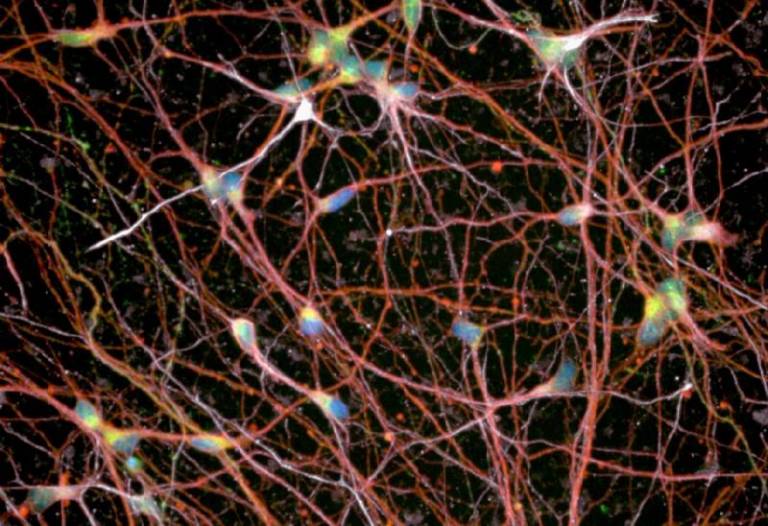New molecular link discovered in motor neurone disease
9 August 2019
A protein implicated in a minority of motor neurone disease cases likely contributes to the disease in all patients, reveals a new study led by scientists at UCL and the Crick published in the journal Brain.

The finding suggests a previously overlooked role of the FUS protein in the pathology of both inherited and non-inherited forms of the disease, and pinpoints FUS as a possible target for future therapies.
“Although FUS is unlikely to be a silver bullet, this discovery brings us another step closer to understanding the complex molecular biology of motor neurone disease, which will be vital in the search for a treatment in the years to come,” said Giulia Tyzack, Crick postdoc and joint first author of the paper.
The link between the FUS protein and inherited forms of motor neurone disease is well established, with 1-2% of patients having a mutation in the FUS gene. In these patients, the FUS protein moves out of the nucleus of motor neurons and forms disruptive clumps inside the cell.
No FUS clumps have been detected in non-inherited forms of the disease – which account for over 90% of all cases – leading to the assumption that FUS is only relevant in patients who carry the FUS mutation.
But as the researchers discovered in this study, just because FUS isn’t forming clumps doesn’t mean that it isn’t still causing disruption.
In this study, scientists investigated the cellular location of FUS in stem cell and mouse models of the disease, as well as human port-mortem tissue of patients with non-inherited motor neurone disease. They found a widespread displacement of FUS in diseased motor neurons compared with healthy ones, suggesting that the protein moves from the nucleus in the disease state.
“We were amazed to see so much FUS protein in the wrong place in almost all of our models of motor neurone disease,” said Rickie Patani, Group Leader at the Crick and UCL, and Consultant Neurologist at the National Hospital for Neurology and Neurosurgery, Queen Square, who led the study.
“Having gone undetected in the majority of motor neurone disease cases for many years, we now know that FUS is a key player in the disease pathology in the vast majority of patients, including the 90% with non-inherited disease.”
The team set out to understand the mechanism behind FUS moving from the nucleus into the rest of the cell, called the cytoplasm. Building on previous work which used bioinformatics to detect protein binding abnormalities, the research team found that FUS latches on to a stretch of RNA inside the nuclei of diseased motor neurons. RNA is a vital molecule that copies instructions from DNA in the nucleus and carries them into the rest of the cell. When the RNA shuttles out of the nucleus into the cytoplasm, FUS gets dragged out with it.
Importantly, the team found that FUS moves out of the nucleus into the cytoplasm before established hallmarks of the disease start to form, indicating that FUS plays an early role in the disease.
“By demonstrating that FUS plays a role in motor neurone disease, we’ve thrown up another possible candidate for drug developers to investigate,” explained Nick Luscombe, Crick Group Leader and joint senior author of the study. “FUS is probably one of many proteins involved in the pathology of the disease, so our next step is to work out which other proteins are being shuttled out of the nucleus, so that we can try to find a way to prevent or reverse this process.”
 Close
Close

